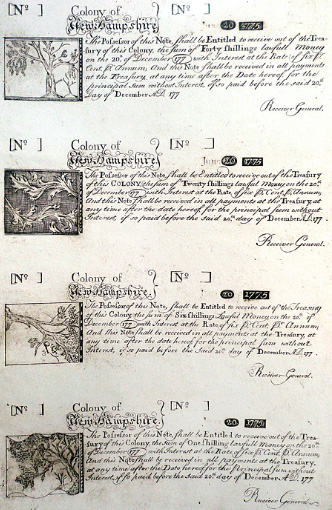The Minnesota Court of Appeals has sided with New Hampshire in a fight a Minnesota man is having with the state of New Hampshire over a copper plate used to print the bonds, which New Hampshire printed to fund the Revolutionary War.

Gary Lea bought the plate (a picture of it is available at the Winona Daily News) at an estate sale in Spring Valley, but just before he was going to sell it at an auction — he was asking a minimum of $50,000 — the state of New Hampshire claimed to be the rightful owner because it claims it paid John Ward Gilman to make the plate in 1775. Nobody seems to know how it ended up in Minnesota, and there’s a dispute over which states’ courts will figure it out.
Today, the Minnesota Court of Appeals overturned a Fillmore County (Minnesota) judge who ruled last March that Minnesota courts had jurisdiction to decide the rightful owner of the plate. The Court of Appeals cited a Supreme Court case that would appear to undercut Minnesota’s jurisdiction in the case, merely because the man who owns the plate lives here and the plate is currently stored here.
That could pave the way for New Hampshire courts to decide who owns its history, or at least, a small part of its history.
The issue has even made the editorial pages of New Hampshire’s Concord Monitor, which called for the plate to be returned.
The collector did nothing wrong, and his desire to profit from his find is understandable. But one way or another, the plate must come home. A state that can’t afford to care for its needy certainly can’t spend a five- or six-figure sum on a piece of its history. But the public, aided perhaps by a modern history-loving patriot of means, can. A fund should be created, perhaps under the state historical society or division of charitable trusts, to accept contributions to purchase the plate. A fund drive should be held. If the money can’t be raised, or if the seller is unreasonable, then by all means, the state should go to court.
Though he has been unable so far to locate records that prove it, former state archivist Frank Mevers is likely correct that the plate was removed from the vault in the State House. Records do, however, show that a former state representative and then-head of the New Hampshire Hospital for the Insane loaned the plate to a Boston doctor and currency collector who used it in the mid-19th century to print commemorative copies of the notes used to fund the War of Independence. So it’s more likely that the plate was not stolen, but borrowed, not returned and then forgotten.
